| Golden Journal No. 42:
Battleship-Carriers
Japanese Conversions
by Mike Bennighof, Ph.D.
October 2022
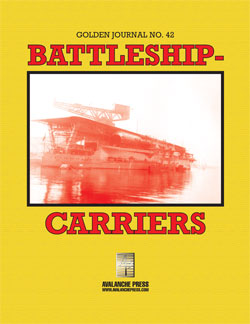 In the weeks after the catastrophic Battle of Midway in early July 1942, the Japanese naval staff looked to make good the loss of four fleet carriers – two-thirds of the First Air Fleet’s striking power. There would be changes to carrier doctrine, and more attention paid to increasing the fleet’s anti-aircraft firepower. No senior officer, however, would lose his job – that would be an admission of failure. In the weeks after the catastrophic Battle of Midway in early July 1942, the Japanese naval staff looked to make good the loss of four fleet carriers – two-thirds of the First Air Fleet’s striking power. There would be changes to carrier doctrine, and more attention paid to increasing the fleet’s anti-aircraft firepower. No senior officer, however, would lose his job – that would be an admission of failure.
Japanese pre-war plans already called for the conversion of suitable large hulls into aircraft carriers. Two large liners had begun conversion in 1940 while still under construction, and one of them (Junyo) had participated in the Aleutians operation conducted simultaneously with the attack on Midway while the other (Hiyo) would commission at the end of July. The submarine support ship Taigei was under reconstruction at Yokosuka Navy Yard and would commission in November as the light carrier Ryuho. Two more submarine support ships had already been converted and commissioned (Shoho and Zuiho).
Not many more large hulls remained under construction: the super-battleship Shinano, third unit of the Yamato class, and two heavy cruisers of the Ibuki class. Shinano and the first heavy cruiser, Ibuki, would be converted into carriers. Work on the second cruiser, which never received a name and had been laid down just a few weeks before, was suspended as it seemed better to start over with a purpose-built aircraft carrier on the same slipway.
That would only yield one gigantic carrier and one very small one; any further conversions would have to come from ships already in service. The seaplane carriers Chitose and Chiyoda had been designed with their later conversion to light carriers in mind; work began to rebuild them in January 1943. Their near-sister Nisshin had been built solely with diesel engines (Chitose and Chiyoda had turbines and auxiliary diesels), and after the difficulties experienced in replacing the diesel power plant of Taigei with turbines in her guise as Ryuho, the Japanese constructors apparently did not wish to repeat the experience.

The converted battleships would have resembled the converted liner Junyo.
That left the fleet’s major surface units: 13 heavy cruisers, four battle cruisers now classed as fast battleships, and six older battleships. The Navy Ministry ruled out the heavy cruisers, as these would be needed both for surface combat and to escort the carriers. Light carriers, in any event, could not replace the heavy carriers lost at Midway.
Admiral Zenshiro Hoshida’s Armaments Bureau, supported by the Naval Aviation Bureau, proposed a radical program, re-constructing all ten capital ships then in service as fleet carriers: the four fast battleships of the Kongo class, the four older dreadnoughts of the Fuso and Ise classes, and the two newer dreadnoughts of the Nagato class. That brought pushback from the Navy General Staff, which cited the need for the fast battleships to screen and protect carrier task forces; it would do little good to produce new aircraft carriers if they could not be shielded from enemy surface attack.
The General Staff also balked at losing the two Nagato-class ships, the only Japanese battleships with 16-inch guns. This would, as things turn out, be a rather weak argument: while Mutsu and Nagato had sortied with the Main Body at Midway, afterwards Nagato spent the next year tootling around the fleet base at Hashirajima. While Mutsu went to the forward base at Truk, commanders there were reluctant to commit her to action in the Solomons because of her lack of speed.
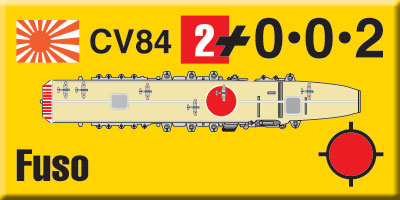
That left the four elderly dreadnoughts built during the First World War in two similar classes of two ships each. The Fuso class (Fuso and Yamashiro) and Ise class (Ise and Hyuga) each carried a dozen 14-inch guns. Fuso had been laid down in 1912 and the Ise class three years later, on the slipways vacated by the then-new battle cruiser Haruna and Kirishima. The Ise class was slightly longer and larger than Fuso, and slightly faster even after the 1930’s reconstruction of all four ships. They also had a somewhat better arrangement of their main gunnery turrets (both classes carried their heavy guns in six twin turrets).
Japanese naval constructors, with far more experience at converting other types of ships into aircraft carriers, eventually convinced Hoshida to go with a much more austere conversion. Rather than razing the ships to the main deck and erecting a carrier structure atop it, they suggested creating a hybrid battleship-carrier, that would retain part of its main armament with the aft end given over to operating a large group of seaplanes.
Approval came in June 1943, and worked started with Ise and Hyuga. Fuso and Yamashiro never received the conversion. Their turret layout would have necessitated removal of six of their twelve 14-inch guns, where the Hyuga class would only lose four (and Hyuga had already lost one turret to an accidental explosion).
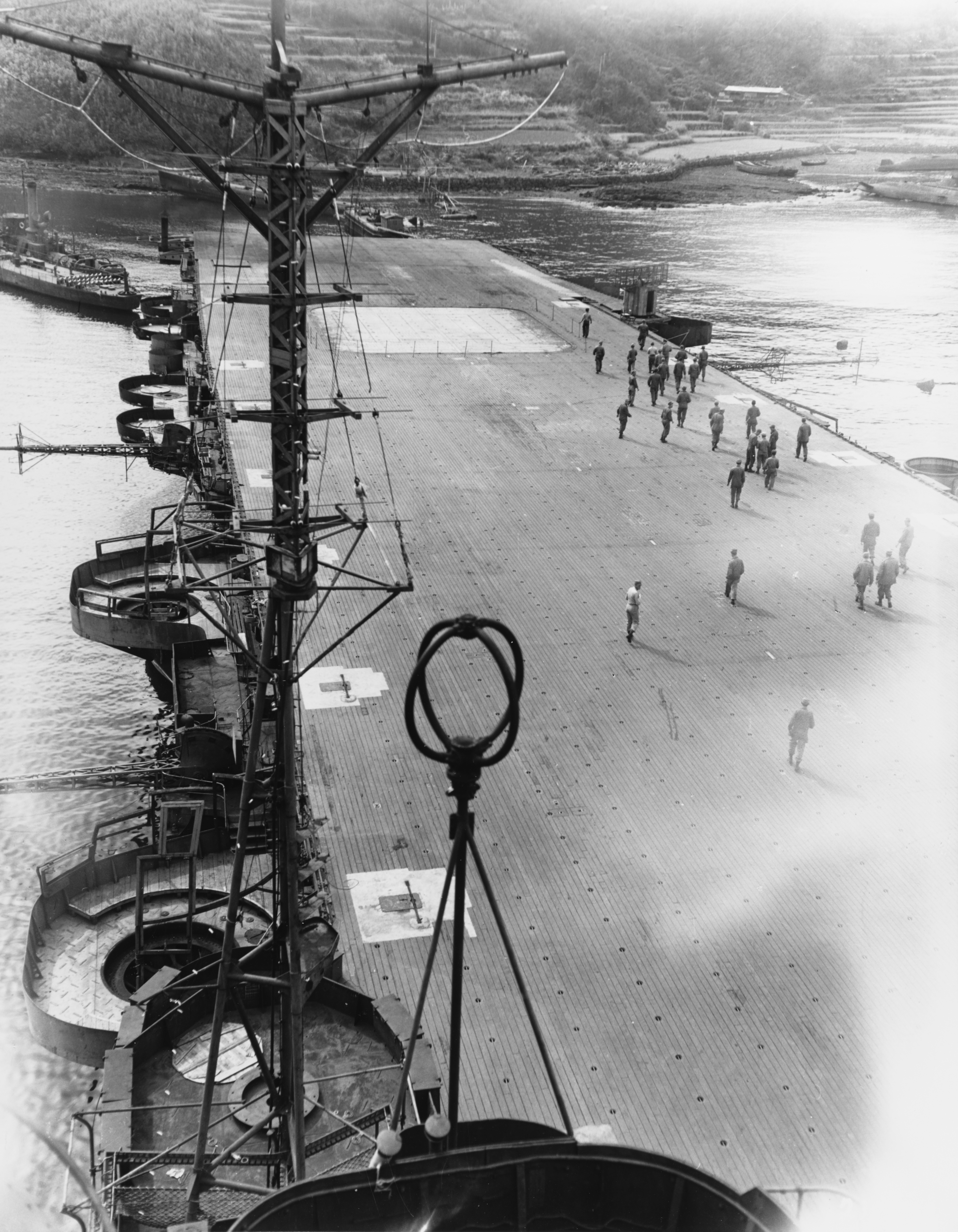
Junyo's flight deck, seen post-war.
Initial plans called for everything aft of the funnel to be removed, but the final version only removed the two stern turrets and the armored barbettes that supported them. A hangar took their place, with an aircraft handling deck above it. This was not a true “flight deck,” as aircraft were no longer intended to fly off of it. Two catapults would launch the planes.
The two ships initially were intended to carry the D4Y “Judy” dive bomber. This plane had good offensive punch, but the battleships could not have recovered them: they would fly one sortie, then have to land at an airfield or on an actual carrier. The battleships could not re-fuel or re-arm their aircraft, and would have to enter a port to recover them. Planners decided this was much too complicated, and wanted the two ships to be able to fully operate their air group.
Instead, the two ships would also operate the Aichi E16 Zuiun (“Auspicious Cloud”) seaplane, known to the Allies as “Paul.” Eleven of each type would be carried. The Auspicious Cloud carried a respectable bomb load and had good range and armament. As a final modification, each ship received over a hundred 25mm anti-aircraft guns and a number of rocket launchers.
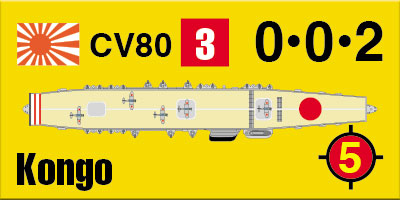
As through-deck carriers, the ships would have likely received a conversion similar to that given the battleship Kaga. Whatever plans were drafted toward this end, if any, did not survive the war. All four of the older dreadnoughts had serious structural weaknesses, which would only have been made worse by removal of the armored barbettes below their main armament turrets. The two battleship-carriers required an eight-inch layer of concrete over their aircraft-handling deck to correct their trim after losing the weight of turrets and barbettes.
They also would have been slow. Japanese carriers, which did not use catapults, needed a relative wind speed of about 26 knots to launch aircraft, a couple of knots more for heavier attack planes. With no wind, Kaga at 28 knots could only barely get her air group off the deck. The compressed-air catapults of the time (the steam catapult would only come into use after the war) needed a relatively long time to re-charge between launches. That was fine for single planes, like the floatplanes launched from cruisers, but was not an alternative for a large carrier air group. A fleet carrier could not afford to have her aircraft trapped on her flight deck when becalmed.
Japanese designers had fixed this problem in Kaga – originally designed for 25 knots – with a radical reconstruction that included completely replacing her power plant and lengthening her hull by 52 feet. After their reconstruction in the 1930’s, Fuso and Yamashiro made 24.7 knots while Ise and Hyuga clocked 25.3 knots; Nagato and Mutsu made 25 knots while the four fast battleships were rated for 30 knots.
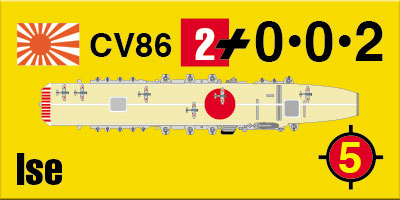
All six of the battleships (counting Nagato and Mutsu) would have probably needed similar increases in their length, and another replacement of their power plant, this time with the powerful Kampon geared turbines that drove Japanese heavy cruisers. While the Americans had ordered a massive armada of new ships and had all manner of additional machinery that could be re-directed to their projects, Japanese industry did not have extra sets of very large turbines and boilers lying about. The light carrier conversions received turbines re-directed from destroyers, but these would not have provided the much bigger battleship hulls the necessary speed.
Japanese aviators liked Kaga very much: her towering height assured a dry flight deck in all but the heaviest seas, and she had plentiful space for crew accommodations, spare aircraft and workshops. If converted, the older battleships would likely have been more like the converted passenger liners Junyo and Hiyo, which failed to make their designed speed of 25 knots (coming in closer to 22 knots) and were structurally unsound ships.
The fast battleships would have followed a pattern more similar to Akagi, another converted battle cruiser. They could likely keep their machinery, but they would still require enormous work, first to remove their main armament, and then to reinforce the ship’s structure to compensate for the shift in weight and loss of strength offered by the heavily armored barbettes.
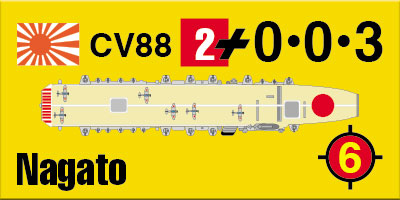
All ten ships were estimated to carry an air group of 54 planes; this appears to be a guess based on the similarly-sized Junyo. In practice the ex-battleships probably could have taken on a few more planes than Junyo; just where the Imperial Navy would find the planes and pilots (not to mention mechanics and armorers) when it could not completely fill the flight decks it already had is a completely different question.
Hoshida’s architects estimated that reconstruction would take 18 months, but that’s probably wildly over-optimistic. Shinano’s conversion took two years; though she was a much larger ship, she also retained her machinery, hull form and even the armored barbettes (converted into ordnance stowage). All of the conversions would have required extensive testing after completion to adjust their trim and ballast, which would have delayed their entry into service still longer. Shinano was also a brand-new ship, taken over for conversion while still under construction. Fuso, Yamashiro and the four fast battleships were already 30 years old at the time of the Battle of Midway; their hulls had seen decades of stress.
Kaga had been a useful investment when converted, because treaty limitations prevented the Imperial Navy from laying down a new carrier instead. That wasn’t the case during wartime, and Hoshida’s staff quickly realized that battleship conversions would be a very poor investment of Japan’s limited resources. Instead, they ordered sixteen new flattops to a design derived from the Hiryu class, simplified for mass production.

Golden Journal No. 42: Battleship-Carriers includes pieces for all ten Japanese battleships as converted to aircraft carriers and Fuso and Yamashiro as hybrid battleshi-carriers. Plus, you get scenarios for Second World War at Sea: Midway, so you can play with them.
The Golden Journal is only available to the Gold Club (that’s why we call it the Golden Journal). It’s $12.99, exclusively for members.
Click here to join the Gold Club.
See your Gold Club Insider newsletter for ordering information.
Sign up for our newsletter right here. Your info will never be sold or transferred; we'll just use it to update you on new games and new offers.
Mike Bennighof is president of Avalanche Press and holds a doctorate in history from Emory University. A Fulbright Scholar and NASA Journalist in Space finalist, he has published a great many books, games and articles on historical subjects; people are saying that some of them are actually good.
He lives in Birmingham, Alabama with his wife, three children, and new puppy. He misses his lizard-hunting Iron Dog, Leopold.
Want to keep Daily Content free of third-party ads? You can send us some love (and cash) through this link right here.
|
